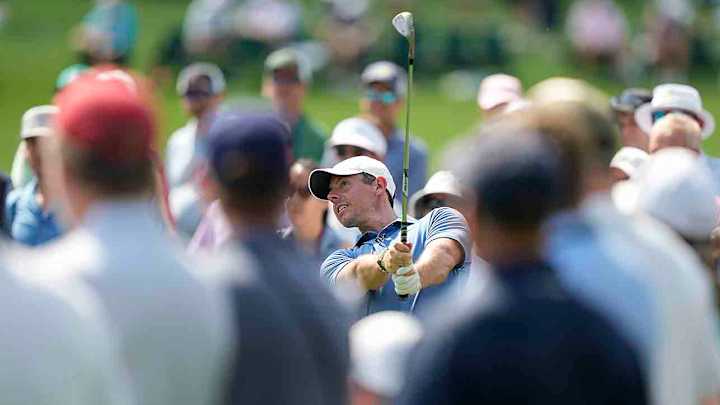Augusta National Will Not Pay for a Rolled-Back Ball, So Who Will?

AUGUSTA, Ga. — Does Augusta National Golf Club, home to the Masters and a massive financial repository, have a financial limit?
The answer is yes.
Chairman Fred Ridley of Augusta National Golf Club and the Masters Tournament made it clear that the club will not dip into its coffers to design and manufacture a golf ball.
During his Wednesday press conference, Ridley instead referenced former ANGC chairman Hootie Johnson’s comments about the possibility of making a Masters Ball back on April 6, 2005.
“Well, we are not too far along with that,” Johnson said in a press conference that day. “It's an option that we would not want to take off the table. We are hopeful that the governing bodies will do something about what most everyone in golf considers to be a serious problem.”
In 2005, the Masters was played at 7,290 yards. This year, after lengthening the 13th hole some 35 yards, Augusta National will play at 7,545 yards.
Clearly, the club got tired of waiting for the R&A and USGA to address what Johnson hoped the governing bodies would do as far as controlling distance at the professional level and consequently keeping courses from being forced to add yardage to keep up.
Finally, 18 years later, the R&A and USGA spoke up, announcing on March 4 a proposed "Model Local Rule" that gives competition organizers the option to require use of golf balls that are tested under modified launch conditions and essentially fly 15 to 20 yards shorter.
Unwilling to inject himself in the conversation during the current comment period for the rule change, Ridley did—in his way—give the thumbs-up to the new Model Local Rule but was thumbs-down on making his own ball.
“I don't think that's a practical solution,” Ridley said on Wednesday. “I'm very familiar with Hootie Johnson's comments, as you all are, about 20 years ago. I think Hootie was trying to make a point that that's something that, if we decided we wanted to do it, we could do it. But I don't think it's a practical solution.”
Translation: no, we aren’t stroking a check or getting in the middle of manufacturing a ball.
What Ridley most believes is if the Model Local Rule is implemented in its current form or has minor amendments, that the manufacturers will participate and make a limited-flight ball.
That assumption represents maybe the death knell of this new rule.
Golf ball manufacturing is a business.
It's fanciful to think that the major ball manufacturers will go to the expense necessary to design, manufacture, distribute and fit PGA Tour professionals or high-level amateurs with a ball that shows little possibility of sales to the public.
Some argue that a secondary ball manufacturer would be a willing participant in making a ball that conforms under the Model Local Rule, but that is speculation.

The Model Local Rule does have prominent player proponents in Rory McIlroy and Tiger Woods.
“I’ve been of the position if you play in a pro event or you have a 'P' next to your name, you should be playing a pro ball,” Woods said on Tuesday at Augusta. “I wouldn't say rolling the game back, but you can start slowing it down because we're just not able to create enough property out there.”
McIlroy is in lock-step with Woods.
“If we really want to keep the old, historical venues relevant, if that's something that's really important to the game of golf, then I would say that this is a step in the right direction,” McIlroy said. “It's a big deal, and you know, it could dramatically change the landscape of our game going forward. I'm certainly in the camp that I believe that it's the right thing to do.”
As McIlroy and Woods are supportive, others are not.
“But I don't see how it's reasonable to have the manufacturers spend tens of millions of dollars on creating a golf ball for people whose livelihood depends on the golf ball being as good as it could be and then have zero ROI on that golf ball,” Patrick Cantlay said on Tuesday. “It just doesn't make any sort of sense to me, and I think that's the worst—I think that's the worst part about it.”
Designing, manufacturing and producing a golf ball is a significant endeavor and an enterprise that none of the proponents either seem to understand how difficult the result will take and how much it will cost, except potentially Ridley.
Distance to many is a problem, but those that see reining the ball in as a calling seem unwilling to pay the financial price, likely making the argument and the result moot.
